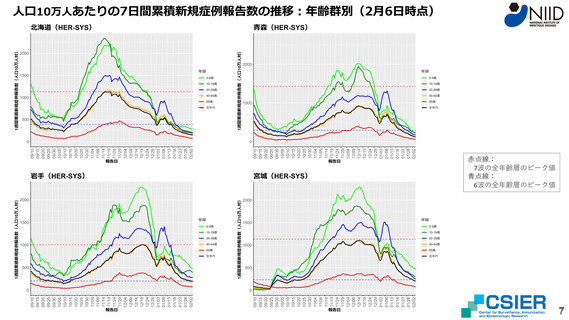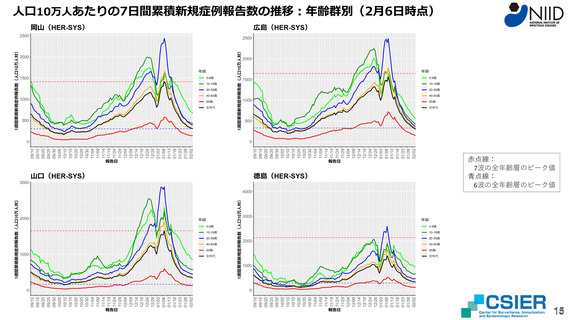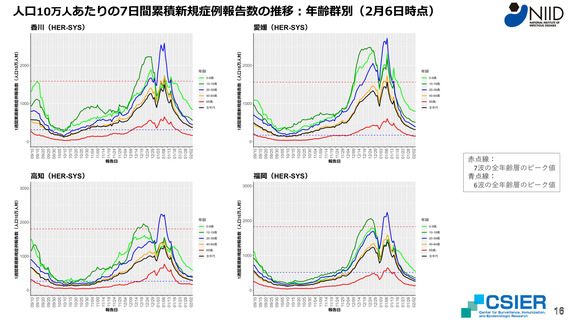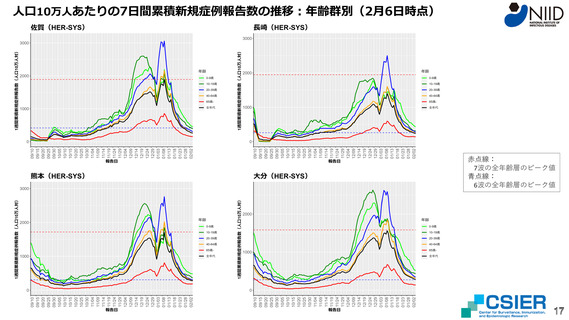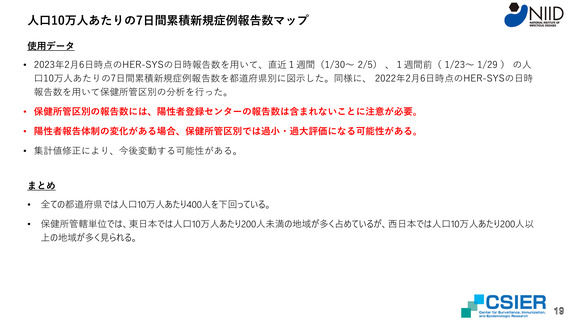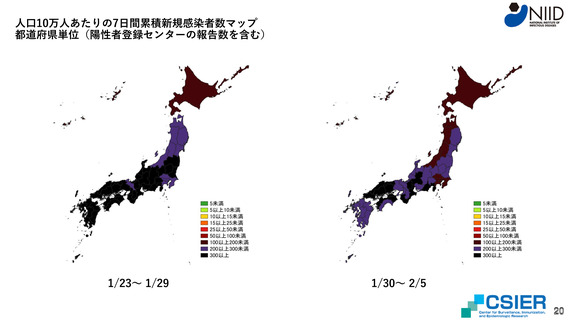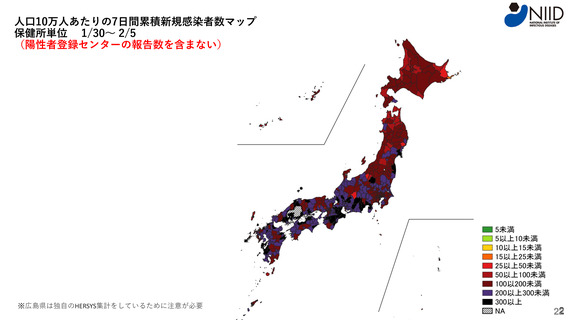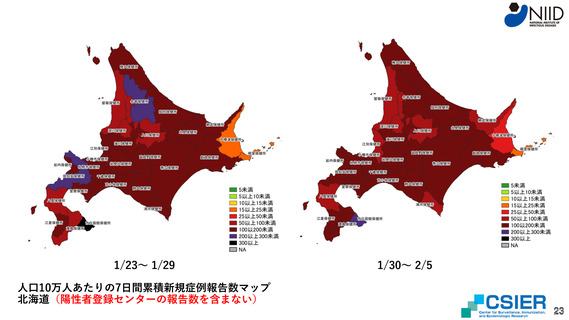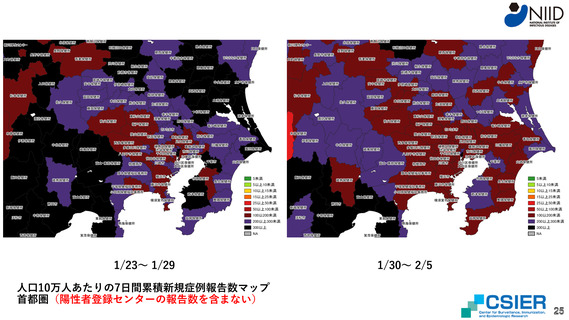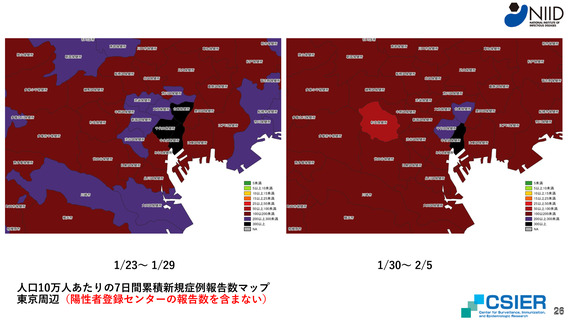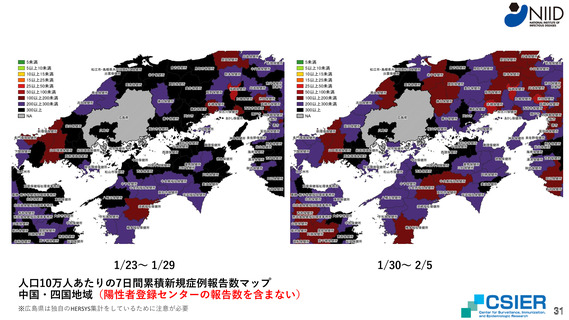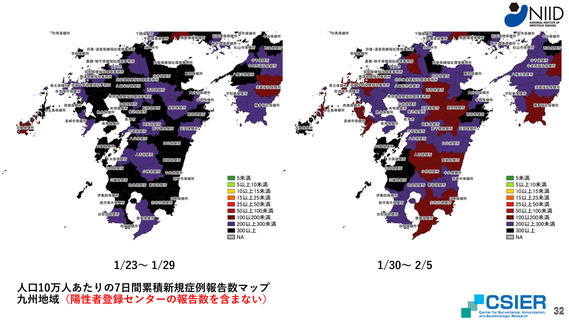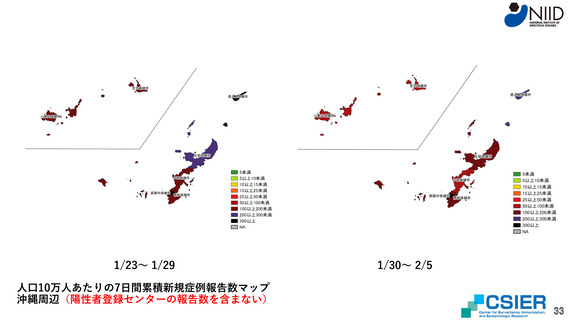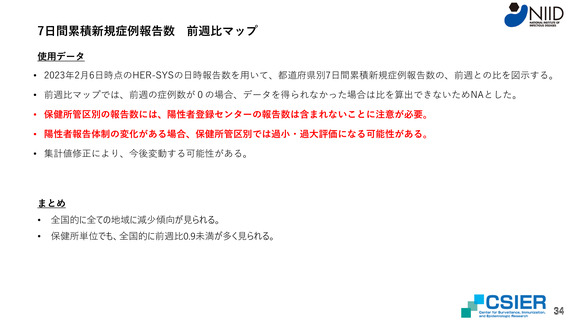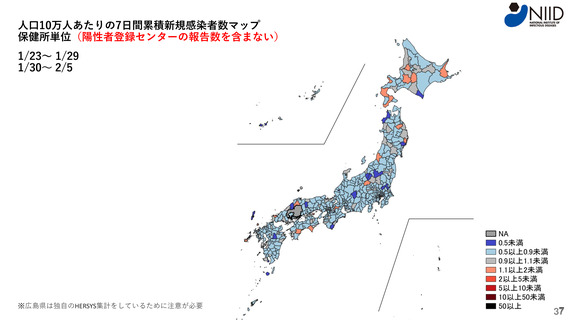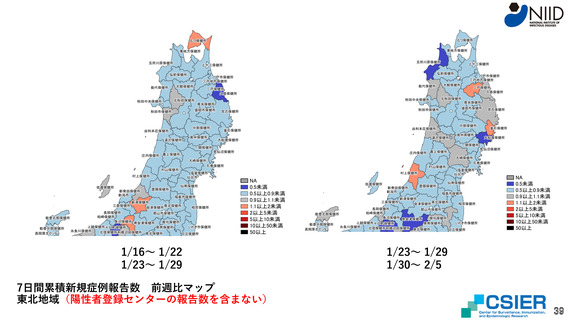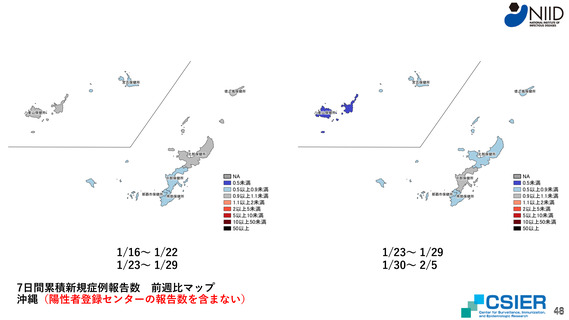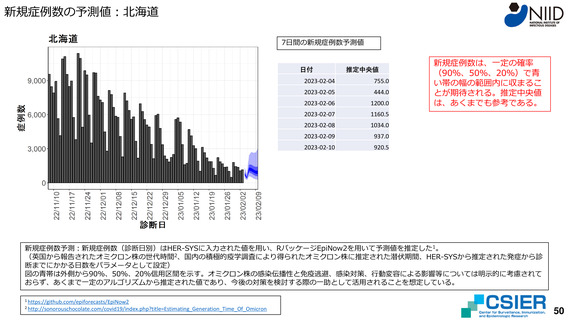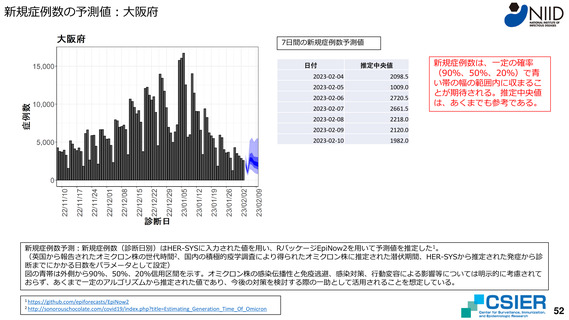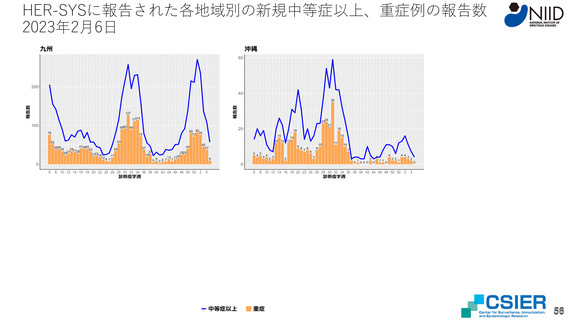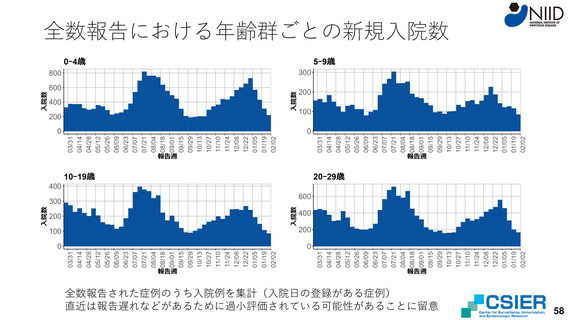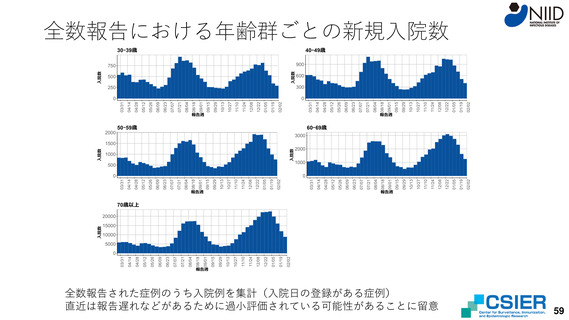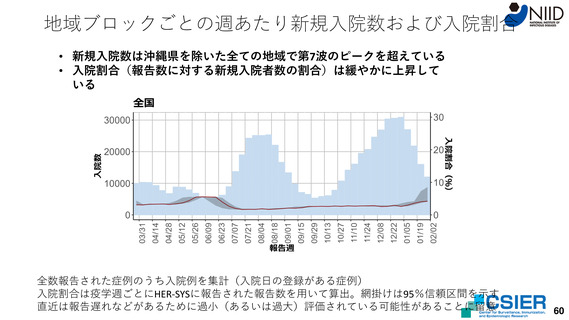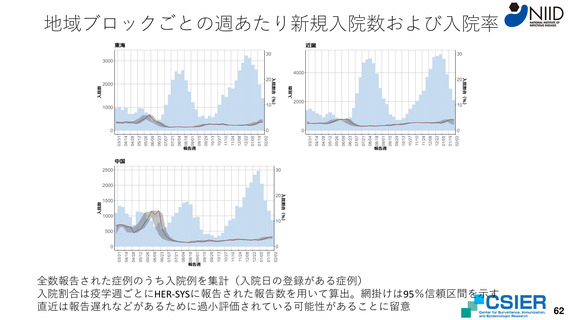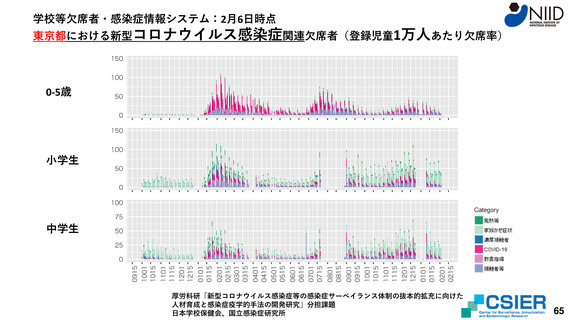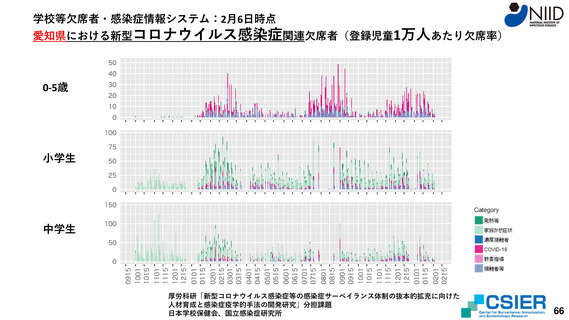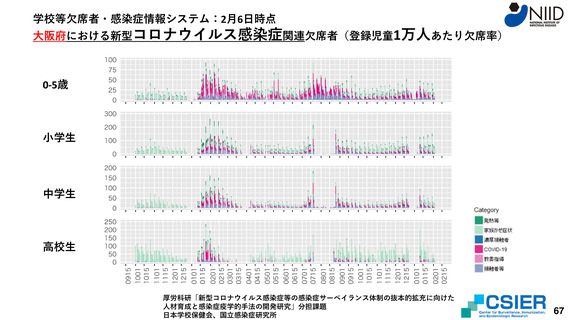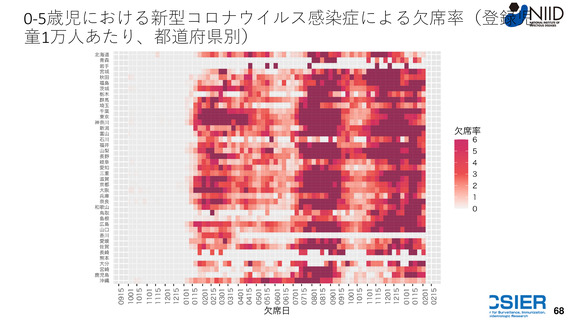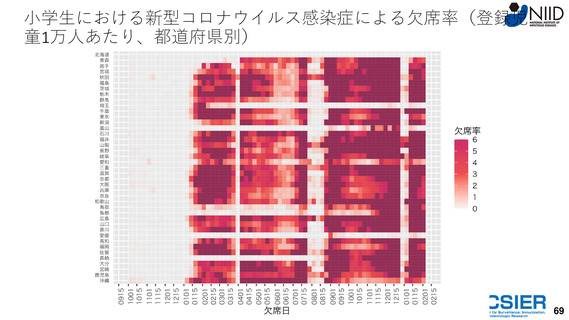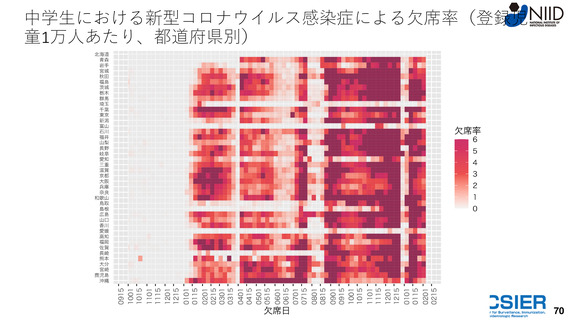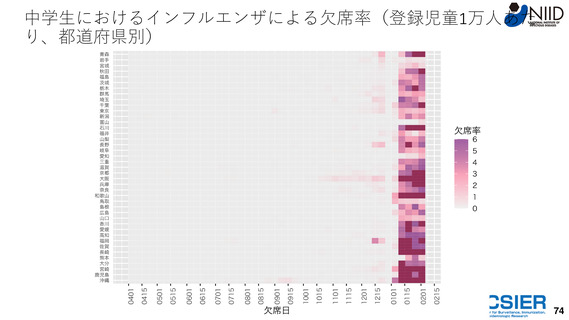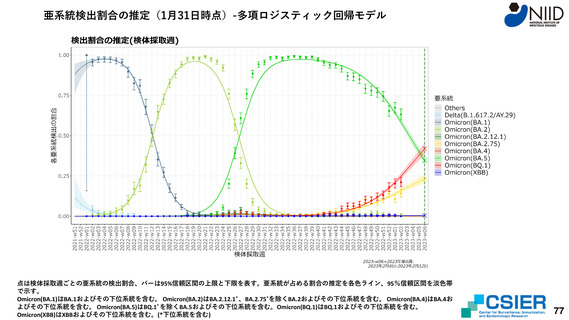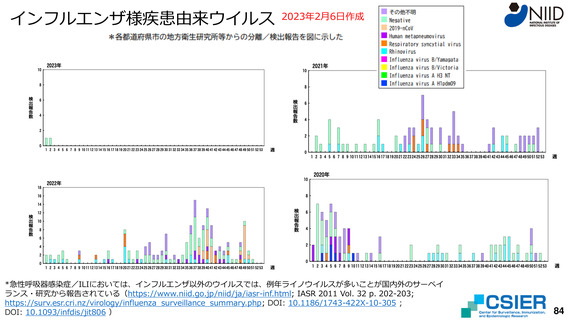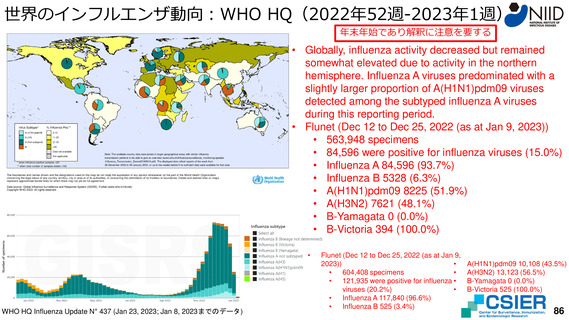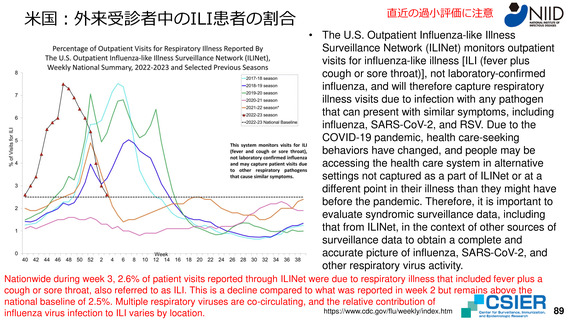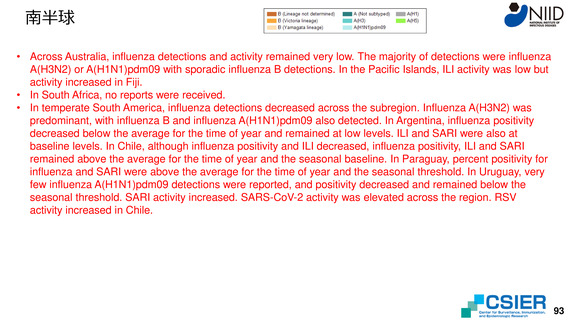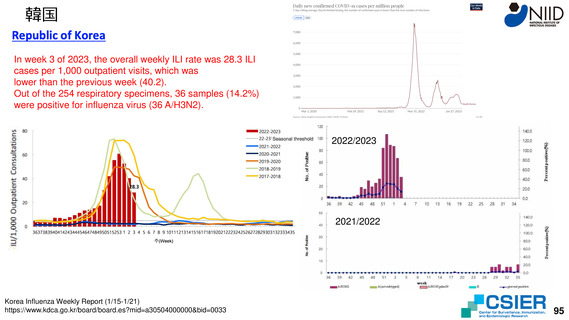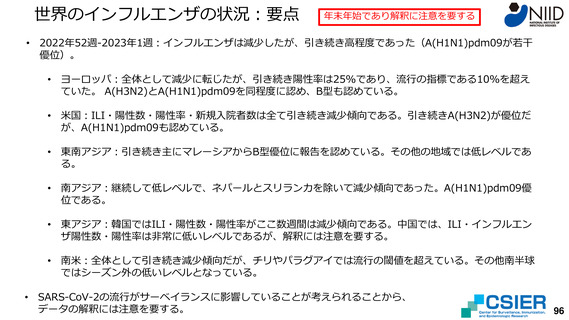よむ、つかう、まなぶ。
資料3-2 鈴木先生提出資料 (87 ページ)
出典
| 公開元URL | https://www.mhlw.go.jp/stf/seisakunitsuite/bunya/0000121431_00395.html |
| 出典情報 | 新型コロナウイルス感染症対策アドバイザリーボード(第116回 2/8)《厚生労働省》 |
ページ画像
ダウンロードした画像を利用する際は「出典情報」を明記してください。
低解像度画像をダウンロード
プレーンテキスト
資料テキストはコンピュータによる自動処理で生成されており、完全に資料と一致しない場合があります。
テキストをコピーしてご利用いただく際は資料と付け合わせてご確認ください。
北半球/温暖地域(ヨーロッパ)
•
直近の過小
評価に注意
In Europe, overall influenza activity decreased slightly with
influenza positivity from sentinel sites decreasing to 25% in week
1, above the 10% epidemic threshold. The proportion of sentinel
specimens testing positive for influenza remained greater than the
proportion testing positive for SARS-CoV-2 (10%). Both influenza
A and B viruses were detected with roughly equal proportions of
influenza A(H3N2) and A(H1N1)pdm09 among the subtyped
viruses across sentinel sites. Fourteen of 37 reporting countries
signalled high or very high influenza intensity and more than half
(27/40) of countries reported widespread activity.
In Eastern Europe, influenza activity increased in most reporting countries, except Slovakia where positivity decreased this period
but remained elevated. ILI increased in most countries except Belarus, Poland, the Russian Federation and Slovakia. Influenza
A(H1N1)pdm09 was predominant in the subregion due to large numbers of detections reported by the Russian Federation. In
Northern Europe, influenza activity decreased in most reporting countries, except Sweden where positivity increased this period.
ILI remained elevated in most countries and was reported as very high in Denmark, high in Ireland and moderate in Norway and
England, UK. Influenza hospitalizations increased in Ireland and Norway and decreased from extraordinary to moderate levels in
England. Influenza A viruses predominated and the predominant subtype varied by country with both A(H1N1)pdm09 and A(H3N2)
viruses co-circulating in most countries. In South West Europe, influenza activity decreased in many reporting countries, was
stable in Belgium and increased in Croatia. ILI/ARI increased in Croatia, Montenegro, the Netherlands, North Macedonia was
stable in Greece and Serbia and decreased in most other countries. SARI decreased in Belgium, France (to a low level) and
Germany, increased in Albania and Croatia and remained stable in Spain. Among subtyped influenza A viruses, A(H3N2)
predominated except in Croatia and the Netherlands. Both influenza A viruses co-circulated in relatively equal proportions in
Serbia and Slovenia. Pooled all-cause mortality estimates from the EuroMomo network showed an elevated
excess mortality and a substantial increase in pooled excess mortality among persons aged 45+ years.
87
•
直近の過小
評価に注意
In Europe, overall influenza activity decreased slightly with
influenza positivity from sentinel sites decreasing to 25% in week
1, above the 10% epidemic threshold. The proportion of sentinel
specimens testing positive for influenza remained greater than the
proportion testing positive for SARS-CoV-2 (10%). Both influenza
A and B viruses were detected with roughly equal proportions of
influenza A(H3N2) and A(H1N1)pdm09 among the subtyped
viruses across sentinel sites. Fourteen of 37 reporting countries
signalled high or very high influenza intensity and more than half
(27/40) of countries reported widespread activity.
In Eastern Europe, influenza activity increased in most reporting countries, except Slovakia where positivity decreased this period
but remained elevated. ILI increased in most countries except Belarus, Poland, the Russian Federation and Slovakia. Influenza
A(H1N1)pdm09 was predominant in the subregion due to large numbers of detections reported by the Russian Federation. In
Northern Europe, influenza activity decreased in most reporting countries, except Sweden where positivity increased this period.
ILI remained elevated in most countries and was reported as very high in Denmark, high in Ireland and moderate in Norway and
England, UK. Influenza hospitalizations increased in Ireland and Norway and decreased from extraordinary to moderate levels in
England. Influenza A viruses predominated and the predominant subtype varied by country with both A(H1N1)pdm09 and A(H3N2)
viruses co-circulating in most countries. In South West Europe, influenza activity decreased in many reporting countries, was
stable in Belgium and increased in Croatia. ILI/ARI increased in Croatia, Montenegro, the Netherlands, North Macedonia was
stable in Greece and Serbia and decreased in most other countries. SARI decreased in Belgium, France (to a low level) and
Germany, increased in Albania and Croatia and remained stable in Spain. Among subtyped influenza A viruses, A(H3N2)
predominated except in Croatia and the Netherlands. Both influenza A viruses co-circulated in relatively equal proportions in
Serbia and Slovenia. Pooled all-cause mortality estimates from the EuroMomo network showed an elevated
excess mortality and a substantial increase in pooled excess mortality among persons aged 45+ years.
87






